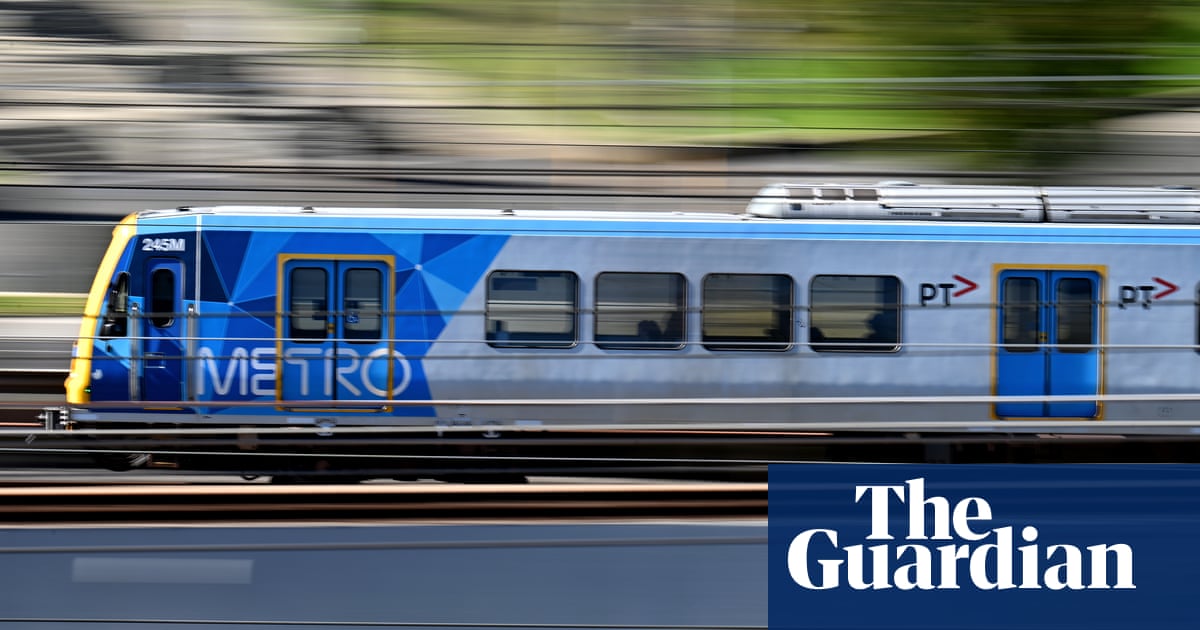With just a week to go until the Victorian budget is handed down, there had been no early announcements – until Monday, when the premier unveiled $5bn for a sweeping “public transport blitz”.
Jacinta Allan was joined by her deputy, Ben Carroll, the transport infrastructure minister, Gabrielle Williams, and eight Labor MPs from Melbourne’s western and northern suburbs to outline the funding, which is split into three areas:
$727m to “switch on” the Metro Tunnel
$98.7m to boost service frequency across seven metropolitan and regional train lines
$4bn to begin major works at Sunshine station
“We are focused on what matters most to working people and families, and that includes cutting congestion, helping workers to get to work more quickly and home more quickly as well,” Allan told reporters.
Here’s what we know so far about the announcement.
Sign up for Guardian Australia’s breaking news email
The centrepiece of the government’s announcement is the $4bn to transform Sunshine station into a “superhub”, which Allan described as the first step towards delivering along-awaited rail link to Melbourne airport.
The 2025-26 budget will allocate $4bn to redevelop the station into a key interchange connecting the metropolitan and regional train lines, as well as the future airport line.
The $4bn includes $2bn worth of funding previously set aside for the Melbourne airport rail project, which has hada stop-start history.
“Sunshine station works are such a vital part of the airport rail project,” Allan said on Monday.
“Because it untangles the network, it also paves the way for future works to be able to deliver more services for the western suburbs.”
The $727m for Metro Tunnel is new funding in the budget, in addition to the Metro Tunnel’s alreadyblown-out $14bn price tag, ahead of its opening later this year.
Consisting of two 9km train tunnels under the CBD and five underground stations, the Metro Tunnel will connect the Sunbury line, which runs through Melbourne’s western suburbs, with the Cranbourne and Pakenham lines in the city’s south-east, taking the pressure off the City Loop.
Allan said the funding would allow for turn-up-and-go services for the Sunbury, Cranbourne and Pakenham lines.
She denied it was a further cost overrun on the project and noted infrastructure funding is separate to service funding.
There’s also $98.7m to improve train frequency across several other metropolitan and regional lines.
This includes increasing peak services on the Werribee line, with two additional trains per hour during the morning and afternoon. On the Sandringham line, services will run every 10 minutes between peak periods, up from four to six trains per hour.
The Craigieburn and Upfield lines will get more frequent off-peak services, with trains running at least every 20 minutes, including late at night and on weekends.
The Gippsland line will get additional weekday inter-peak services on the Traralgon line, running every 40 minutes following the completion of the line upgrades later this year.
Meanwhile, the Bendigo line will see longer trains on more weekend services – to account for thesurge in commutersafter the governmentcapped the price of V/Line tickets. The Seymour line will also get an additional service during both the morning and afternoon peak periods.
Williams said the new services would be added to the network in stages – some before Metro Tunnel opens, some to coincide with the opening and some after.
“We try to sequence changes to our timetables in a sensible way so that we’re not compromising the reliability of our network,” she said.
Williams said the entire metropolitan network’s timetable will need to be adjusted to accommodate the new tunnel, affecting buses, trains and trams.
“It’s a very, very complicated endeavour and one that is well under way.”
